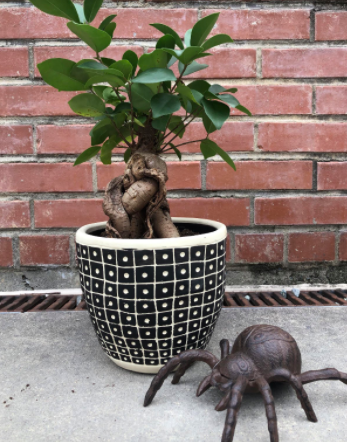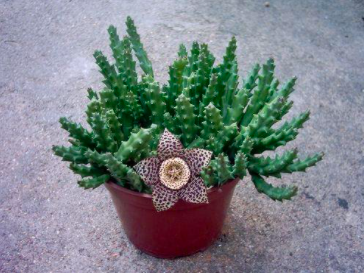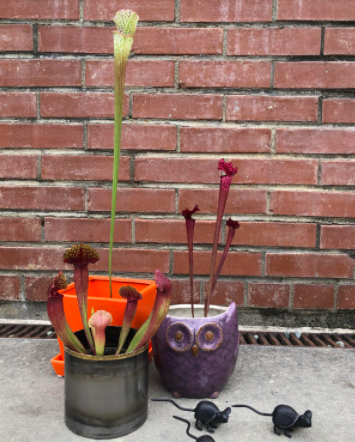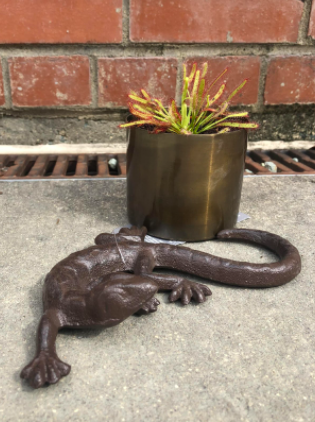-Ginny Shafer-
Anyone who has seen my “human teeth” earrings knows that I love all things strange and macabre, and the popularity of Halloween tells me I’m not the only one! In honor of All Hallows Eve, I want to take some time to highlight a few of the creepiest house plants we regularly carry at Fifth Season.

Ficus microcarpa
The first thing I thought when I saw this bonsai is that its bulbous, twisted trunk looks just like a mandrake out of the Harry Potter series. As any Harry Potter fan could tell you, the mandrake is a legendary plant whose roots are shaped like a human child, and like a human child, its cry is deadly to anyone who hears it. That’s how babies work, right?
Luckily for us, this relative of the fiddle leaf fig is much less deadly. Give it bright, indirect sunlight, and water when the top inch of the soil dries out. If you want to get creative, get some pruners and start shaping your bonsai tree into whatever shape your heart desires!

Corpseflowers
These weird, wobbly succulents aren’t as prickly as they look. If anything, their texture reminds me of those spiky neon silicone earrings we were all obsessed with in the 2000s. These plants are uncommon, so it’s always a treat when we have them in the store!
Corpseflowers (also called Stapeliads) are unusual in that they use flies as their primary pollinators, and what’s the best way to attract flies, everyone? That’s right, bad smells! These plants can produce large, fleshy, foul smelling flowers that attract flies and give the plant its name. They even look like dead animals from a distance!
Fortunately, it takes a lot of light for these plants to bloom, so if you already have one, don’t worry! You’re not doomed to live in a smelly, fly-infested house. Instead, give them bright, indirect sunlight, let the soil dry out in between waterings, and enjoy reminiscing about your middle school fashion choices.

Carnivorous plants
If you already live in a fly-infested house and would like to change that, you should consider getting a carnivorous plant! They can be a little fussy about their environment, so make sure you have lots of direct sunlight and plenty of rainwater, distilled water, or reverse osmosis water available. Venus flytraps are the most recognizable kind of carnivorous plant, but pitcher plants, butterworts, and sundews are just as ravenous.

Picture this: you’re hungry and just so happen to be walking by your favorite restaurant, which is still open because in this hypothetical situation, there is no COVID virus. You walk in, sit down, and remember you promised to call your mom today. You try to get up from your seat, but your backside is stuck to the chair. The room seems smaller than before. You want to pull the chair off of you, but your hands are stuck to the table. There’s an odd tingling in your fingers, and it’s working its way up your arms. You try to scoot away, but your feet are stuck to the floor. How long have your legs been tingling? With a sinking feeling, you realize the room is smaller; the walls are closing in as digestive juices ooze from every surface. Your arms and legs are numb. There’s nothing you can do but hope the end comes quickly. That nightmarish situation is more or less what carnivorous plants inflict on their prey every time they eat. I have never felt more empathy for a fly.

Creepy houseplants not only keep your house free of flies, they can help give your home an extra dash of spookiness all year-round! Come down to Fifth Season to get yours – all of our carnivorous plants are responsibly sourced from registered growers; we NEVER buy from plant poachers. Do you have a favorite creepy or unusual looking plant we didn’t mention? Let us know in the comments! Happy Halloween!

Leave a Reply